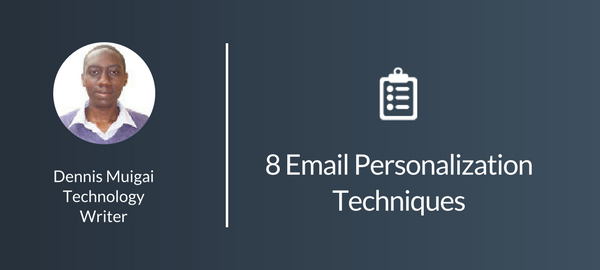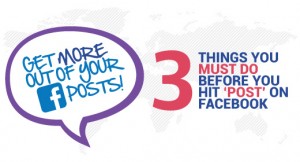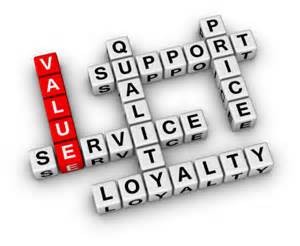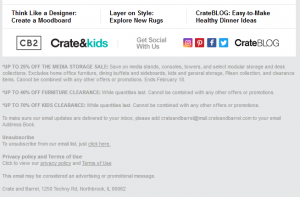
Digital marketing has come a long way, and with its rise, we’ve seen more companies using different digital marketing techniques in a bid to gain an edge over the competition. Today we look at one of these methods. Email personalization is a way to use targeted words and data to show customers that you are human and you care about the reader as a person.
Most companies have a load of data about their prospects and customers. From surveys to webforms, there are limitless ways to gain more data about each customer. But how important is that data if you cannot use it?! That data is particularly important in email marketing. It tells you what to market, to whom, and how to do it.
Email personalization improves click-through rates by 14% and conversion rates by 10% (Aberdeen). So how do you integrate email personalization in your next email? Here are eight ways.
Refer to them by name
Nothing captures our attention faster than seeing our names in text or print.
You should use customer names in email subjects, making your emails grab the recipient’s attention instantly thus prompting them to open. In addition, you can use their names in greetings or in the body of the email. Copyblogger says we become more engaged and even more trusting of a message in which our name appears.
A study by the Stanford Graduate School of Business revealed that adding the name of the recipient to the subject line increases the probability of the recipient opening it by 20%, translating into a 31% boost in sales leads and a 17% reduction in unsubscribe rates.
However, using a person’s name too much may appear salesy and/ or creepy. There is a thin line between personal and creepy.
Stick to first names, they are friendlier than using more two or more words. If you don’t have their first name, then you should reconfigure your data-gathering sources to include a full name collection step.
Be a person yourself
Doesn’t it feel good when people know you are a company and not just another individual? There’s a feeling of pride that comes up when you send an email from a business you own or have power within. It’s tempting to send emails with a marketing or sales handle attached to your domain name (e.g. sales@mycompany.com).
It’s easy, and people can anticipate the content of your email. But people don’t connect with company names, they connect with people. 68% of Americans say they base their decision to open an email on the ‘From’ name.
Readers want to share their pains with people they can refer to by name. Which is why Hubspot and other companies started using people’s names as email senders. Below is an example of their email personalization.

They’ve used Niti as a front person for their marketing department.
Now every time I reply, I don’t have to wonder who or what reads and replies my emails, I already ‘know’ it’s Niti Shah. That’s human connection at its most basic level.
That is what your recipients want, to talk to human beings.
Check your recipient’s gender
Don’t think it matters? The top reasons for U.S. email users to unsubscribe from a business or nonprofit email subscription are too many emails (69%) and content that is no longer relevant (56%). (Chadwick Martin Bailey).
However, you’d be surprised at how many companies still send mass emails to all of their users without considering their gender. When you are selling products that are gender specific, you need to ensure that you know the gender of the recipient of your next email before you hit send.
This is especially true for cloth and shoe retailers or any other businesses whose content is gender sensitive. See below how Jaeger takes its visitors’ genders seriously.

You’ll receive little interest from men when sending a marketing message of bras and tops to them. Just as you’ll get very little response from women when sending advertisements for vests and other masculine clothing.
Which is why segmenting your email lists is important for you so that you may cater to each gender individually.
Not sure what your customer’s gender is? You should have asked them that when they were signing up.
Set up behaviour-triggered emails
These are emails that are automatically sent due to a customer’s action or lack thereof. Behaviour triggered emails show that you care enough to follow their progress through the sales funnel. Setting up behaviour-triggered emails shouldn’t be an uphill task. Just establish important milestones in the use of your product and each time a customer hits a milestone, send them an email.
For example, if you sell email hosting, why not set up automated emails for each time your customers add 1000 more emails. It shows you care. Here is MailChimp sending a behaviour-triggered email.

Use compliments and praise to your advantage
In B2B interactions, successful companies don’t just go on the data that the customer gives them or on the behavioural data from usage of their products. They do the extra leg work and look into their customer’s personal lives. Being able to compliment your customers for achievements that are totally unrelated to your product could be the extra push they needed to become loyal promoters of your brand.
So how do you do this?
Start by checking out their company’s news pages for any recent news that could be worth a mention. Next, check for any media mentions then check them up them on social media. Those three channels will give you enough information for you to figure out what to compliment them on.
Choose something meaningful, like the change of a CEO, and avoid extremely personal events. There is a fine line between appearing friendly, which is what you’re trying to do, and sounding like a stalker. If you compliment them a few times every week for a month, that’s outright stalking them.
Don’t overdo it.
Who doesn’t like a surprise?
Every May, I am sure I will receive at least three happy birthday wishes. One from my internet service provider and the rest from my two banks.
They don’t just do it on my birthday, they send me Merry Christmas and Happy New Year messages every December.
What am I trying to get at?
These companies have figured out how to show they care by taking my DOB and major holidays to reach out to me. You could do the same with your customers. Surprise them these coming months with a birthday wish, or choose an important day in their country’s calendar and wish them a happy celebration.
To make them feel special, why not add a discount like the one shown below?
Reinforce text with imagery
Of the 5 senses, visual data is processed fastest and better than all other forms of data. But video far outperforms text. Just like in your website copy and your blog posts, email readers hate receiving a block of text in their emails.
Images and videos don’t just draw a reader’s attention, they also leave an impression. They are memorable and depending on what you choose, your readers may remember the messages in your emails for more than just a few minutes.
The next time you are sending an email, check to see whether it deserves a photo. Judge by the amount of text in the body and if it’s too much, add a photo.
Timing is everything
MailChimp suggests that the best time to send an email is around 2 pm. But should you send your global email at that time?
The answer is no.
Take this example. You have three customers, Tom, Dick and Harry. Tom lives in California, Dick in London and Harry in Beijing.
When Tom is having lunch at 2 pm, Dick is headed to bed at 10 pm, while Harry is summarizing his dreams at 6 am. So, should you hit send for all of them at the same time?
Tom will likely see your email before evening, but the other two won’t. Harry has to go to work while Dick has to sleep. Both will probably see your emails more than 6 hours after you send them. If they receive too much email, then your emails drop further in their inbox, reducing the probability that they will be opened.
Be smart. Figure out what time works best for your customers by region, then configure your email software to send the emails at appropriate times for different groups of customers.
It will improve open rates, engagement and this will definitely lead to an improvement on ROI.
And there you have it, 8 ways to improve your email open rates and engagement.
Best Practices for Email Personalization
42% of surveyed marketers claim they personalize using anonymous data (eConsultancy). Where do you get all the data you need for truly personalized emails?
- Social media – It goes without question that social media is the new public notice board. Check your customer’s Facebook page, LinkedIn page and twitter account for any news that may be relevant in your email.
- Signup forms – In the most basic form, a signup form should be able to take their name and email address. But, you can go a step further and add one or two more fields, or just do it is a second step after confirming their emails.
Take a cue from this photo, that’s us collecting information.

- Company news pages – Company news pages have a load of data that you can use for email personalization. That’s where you learn about company size and company events like seminars.
- Other data collection tools like surveys – They’re very effective; why not set one up today? It could help you learn their pain points.
- Syndicate data from all your marketing avenues – That’s easy when using a CRM, but if you don’t use one, no worries, doing it manually still works for smaller companies.
And now the fun part, the best practices.
Just because these methods have been found to be effective doesn’t mean that you should use them all at once. You should,
- Choose 4 and stick to them. It saves you from being so friendly that they don’t take you seriously. Did I also forget sounding creepy?
- Don’t overdo on any point. If you send them a card for every national holiday you are missing the point: surprise.
- A/B testing. What works on e-commerce sites doesn’t exactly work the same for SaaS companies. Results vary from company to company and in different industries. Find out what works best for you and focus on optimizing it.
- Use smart segmentation. Email list segmentation goes hand in hand with success at email marketing. Start by segmenting your list by gender (if it’s important), or by their preferences while they signed up. It will save you a lot of unsubscribers and unhappy customers.
There you have it. A definitive guide to email personalization. Don’t just sit on it. Read your next email right now and see whether you can make it a little more personal without sounding creepy.
Email personalization delivers 6x higher transaction rates (Experian) Start personalizing your emails today and you are on your way to experiencing an increase in sales and revenue.
Have any of these tips worked out for you? I would like to hear your stories in the comments.
Digital & Social Articles on Business 2 Community(71)






